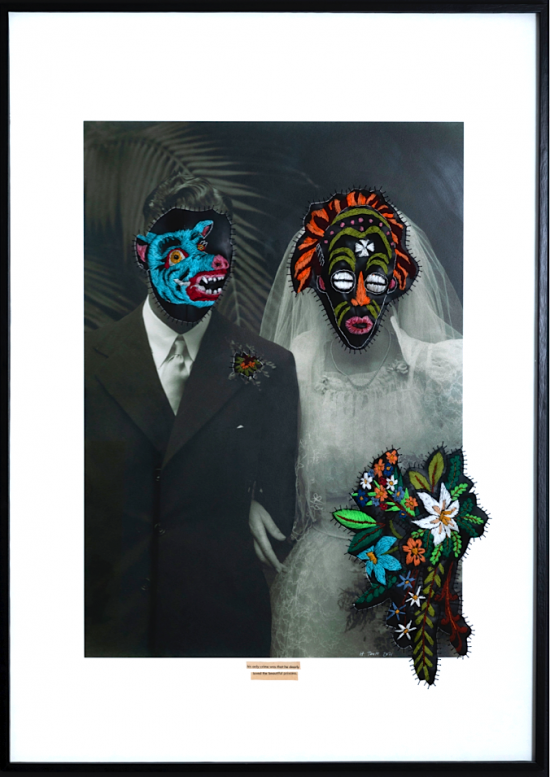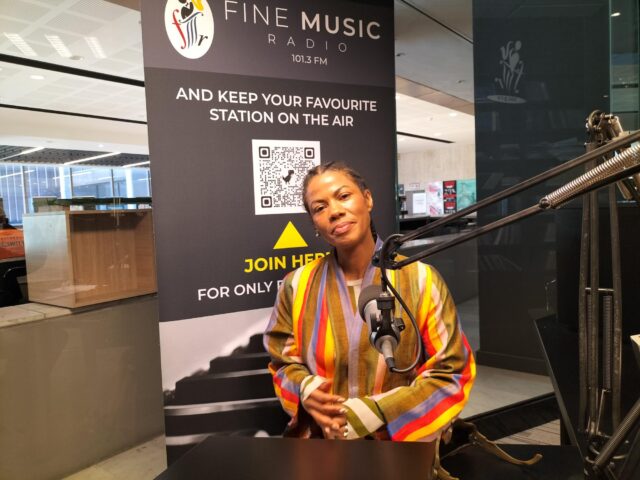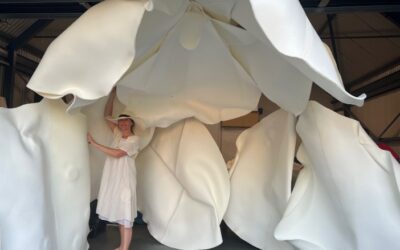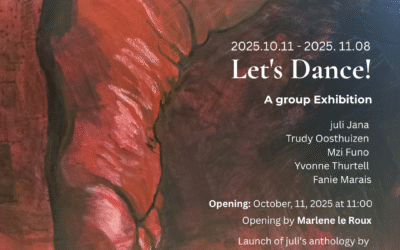Eucatastrophe, at Deepest Darkest, marks the fifteenth solo exhibition by awarding winning South African multi-disciplinary artist, Hannalie Taute.
Eucatastrophe / juːkəˈtastrəfi / NOUN rare. A sudden turn of events at the end of a story which ensures that the protagonist does not meet some terrible, impending, and very plausible and probable doom.
Having particpated in over 45 exhibitions and art fairs worldwide, including Australia, The Netherlands, Tasmania, and the USA, the exhibition of 20 new multimedia works sees Taute pushing previous boundaries of her distinct style and ‘re-stiching historical narratives’ into a fantastical new fairy tale wedding mythology.
The exhibition opens on Saturday 17 April at 12h00 at Deepest Darkest and promises to be a an interactive celebration of times to come, the Happily Ever After we are all currently yearning for.
“Let me tell you a story… or rather a fairy tale, magical and mystical, inspired by memories of people and places in found pictures, especially those of brides.
A wedding is often the wondrous outcome of fairy tales. The ultimate happy ending of the long suffering heroine and her prince…or the searching prince and the salvation offered by his princess bride. An auspicious union meant to correct all that is wrong and unjust in the world. ‘Happily ever after’ is the forever-triumph in these tales. But we don’t live in a fairy-tale, do we?…
Creating my own imaginary fairy tale kingdom, removing the faces and historical identities from these vintage photographs and replacing them with a variety of cultural masks and colourful embroidered flowers, a new fantasy emerges. A world clinging to the need to believe in the magic of innocent aspiration.”
– Hannalie Taute
WHERE: Deepest Darkest Contemporary Gallery, 20 Dixon Street, De Waterkant, Cape Town 8001
WHEN: Opens – Saturday 17 April 2021 at 12pm, Closes: Thursday 20 May 2021. General Gallery Hours: Tues – Sat 12pm – 4pm
Private viewings may be booked via email
INFO: Deon +27 79 1384 203 | E info@deepestdarkestart.com | Visit
PHOTO: His Only Crime is that He Dearly Loved the Beautiful Princess 2021
Safety:
All visitors to the gallery are required to wear masks at all times. Hand sanitizer is available upon entry.
Eucatastrophe – Hannalie Taute – Project Statement
There has been much written and discussed around embroidery focusing on the ‘Feminist’ aspect and craft versus art. With both my stitching technique and the material onto which I embroider being ‘imperfect’ so to speak, my interest lies in the dysfunctional aspect of embroidery. In her book The Subversive Stich, Rozsika Parker notes: “Freud was to decide that constant needle work was one of the factors that ‘rendered women particularly prone to hysteria’ because day-dreaming over embroidery induced ‘dispositional hypnoid states’.
Many of the original photographs that make up this body of work are found, sourced at flea markets, or donated by family and friends.
While many of the photographs were captured here, the posed wedding scenarios in these rescued and reused images recreate a time and place seemingly devoid of a greater local South African context of that time – idyllic gardens, photo studios. My adding masks from different cultures is perhaps a ‘re-stitching of a historical narrative’ where these different cultures “marry” each other. Again, this speaks to the innocent ideal of a wedding being the promise of a magical ending.
Emily Fairchild, an associate professor of sociology at the New College of Florida in Sarasota specializing in gender and culture, noted, “Weddings are moments when gendered ideas become really clear. A wedding is a coup for women, because they’ve met their gendered expectation. By having a wedding, you prove your worthiness, your womanness, in a way that a man doesn’t need to. A man can be a man by having a job, in ways that aren’t tied to his family.”
Similar can be said for embroidery, especially the subject matter of a ‘genteel’ woman’s embroidery during the eighteen and nineteenth centuries were as important as its execution in affirming her femininity (and thus her worth and worthlessness in the world’s eyes). And what better way to advertise this achievement (besides announcing it in a newspaper) than hosting a grand affair centered on the woman who has fulfilled her dreams? I am drawn to this idea of most fairy tales culminate in a wedding, usually that of a woman who elevates her status in the world by getting hitched.
“Weddings historically have a long association with material well-being,” notes Professor Ruth Bottigheimer, a research professor in the Department of Cultural Analysis and Theory at Stony Brook University. In her book Magic Tales and Fairy Tale Magic, where she dates the obsession with weddings to the 1500’s (when the first fairy tales emerged in Europe) she further notes: “If not, you have a miserable life as a maiden aunt, a lady in waiting, where you serve someone else’s life. A wedding is social success.”
My own experience and expression as a woman, a wife and mother is constantly a work in progress. Working on this body of work, I thought a lot about weddings before, during and after the pandemic. Why do people still want to get married today, and why is the divorce rate so high? Peggy Orenstein the author of Cinderella At My Daughter speculates in an article for the New York Times (Chasing the Fairy Tale Wedding) that weddings may be so popular precisely because the divorce rate is so high. “Maybe people think that if they do the wedding, it’ll mask the hard work later on. Maybe it’s that marriage is such an anachronism you have to go into it with a big bang.” – Hannalie Taute, 2021
The WHAT, WHY & WHERE of the
arts scene in around Cape Town
see the
arts + crafts map







